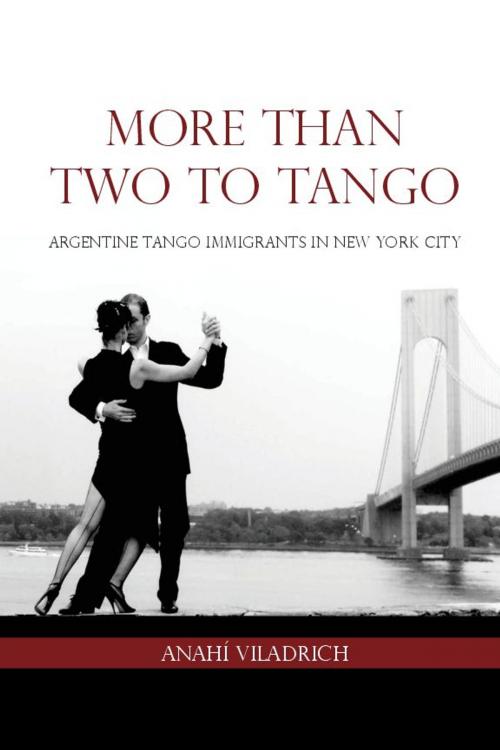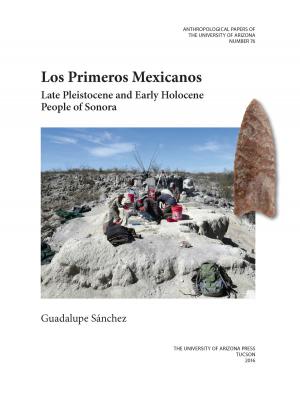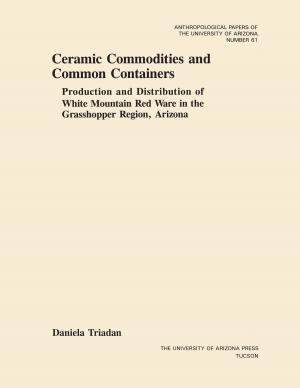More Than Two to Tango
Argentine Tango Immigrants in New York City
Nonfiction, Social & Cultural Studies, Social Science, Cultural Studies, Ethnic Studies, Anthropology| Author: | Anahí Viladrich | ISBN: | 9780816599103 |
| Publisher: | University of Arizona Press | Publication: | September 26, 2013 |
| Imprint: | University of Arizona Press | Language: | English |
| Author: | Anahí Viladrich |
| ISBN: | 9780816599103 |
| Publisher: | University of Arizona Press |
| Publication: | September 26, 2013 |
| Imprint: | University of Arizona Press |
| Language: | English |
The world of Argentine tango presents a glamorous façade of music and movement. Yet the immigrant artists whose livelihoods depend on the US tango industry receive little attention beyond their enigmatic public personas. More Than Two to Tango offers a detailed portrait of Argentine immigrants for whom tango is both an art form and a means of survival.
Based on a highly visible group of performers within the almost hidden population of Argentines in the United States, More than Two to Tango addresses broader questions on the understudied role of informal webs in the entertainment field. Through the voices of both early generations of immigrants and the latest wave of newcomers, Anahí Viladrich explores how the dancers, musicians, and singers utilize their complex social networks to survive as artists and immigrants. She reveals a diverse community navigating issues of identity, class, and race as they struggle with practical concerns, such as the high cost of living in New York City and affordable health care.
Argentina’s social history serves as the compelling backdrop for understanding the trajectory of tango performers, and Viladrich uses these foundations to explore their current unified front to keep tango as their own “authentic” expression. Yet social ties are no panacea for struggling immigrants. Even as More Than Two to Tango offers the notion that each person is truly conceived and transformed by their journeys around the globe, it challenges rosy portraits of Argentine tango artists by uncovering how their glamorous representations veil their difficulties to make ends meet in the global entertainment industry. In the end, the portrait of Argentine tango performers’ diverse career paths contributes to our larger understanding of who may attain the “American Dream,” and redefines what that means for tango artists.
The world of Argentine tango presents a glamorous façade of music and movement. Yet the immigrant artists whose livelihoods depend on the US tango industry receive little attention beyond their enigmatic public personas. More Than Two to Tango offers a detailed portrait of Argentine immigrants for whom tango is both an art form and a means of survival.
Based on a highly visible group of performers within the almost hidden population of Argentines in the United States, More than Two to Tango addresses broader questions on the understudied role of informal webs in the entertainment field. Through the voices of both early generations of immigrants and the latest wave of newcomers, Anahí Viladrich explores how the dancers, musicians, and singers utilize their complex social networks to survive as artists and immigrants. She reveals a diverse community navigating issues of identity, class, and race as they struggle with practical concerns, such as the high cost of living in New York City and affordable health care.
Argentina’s social history serves as the compelling backdrop for understanding the trajectory of tango performers, and Viladrich uses these foundations to explore their current unified front to keep tango as their own “authentic” expression. Yet social ties are no panacea for struggling immigrants. Even as More Than Two to Tango offers the notion that each person is truly conceived and transformed by their journeys around the globe, it challenges rosy portraits of Argentine tango artists by uncovering how their glamorous representations veil their difficulties to make ends meet in the global entertainment industry. In the end, the portrait of Argentine tango performers’ diverse career paths contributes to our larger understanding of who may attain the “American Dream,” and redefines what that means for tango artists.















